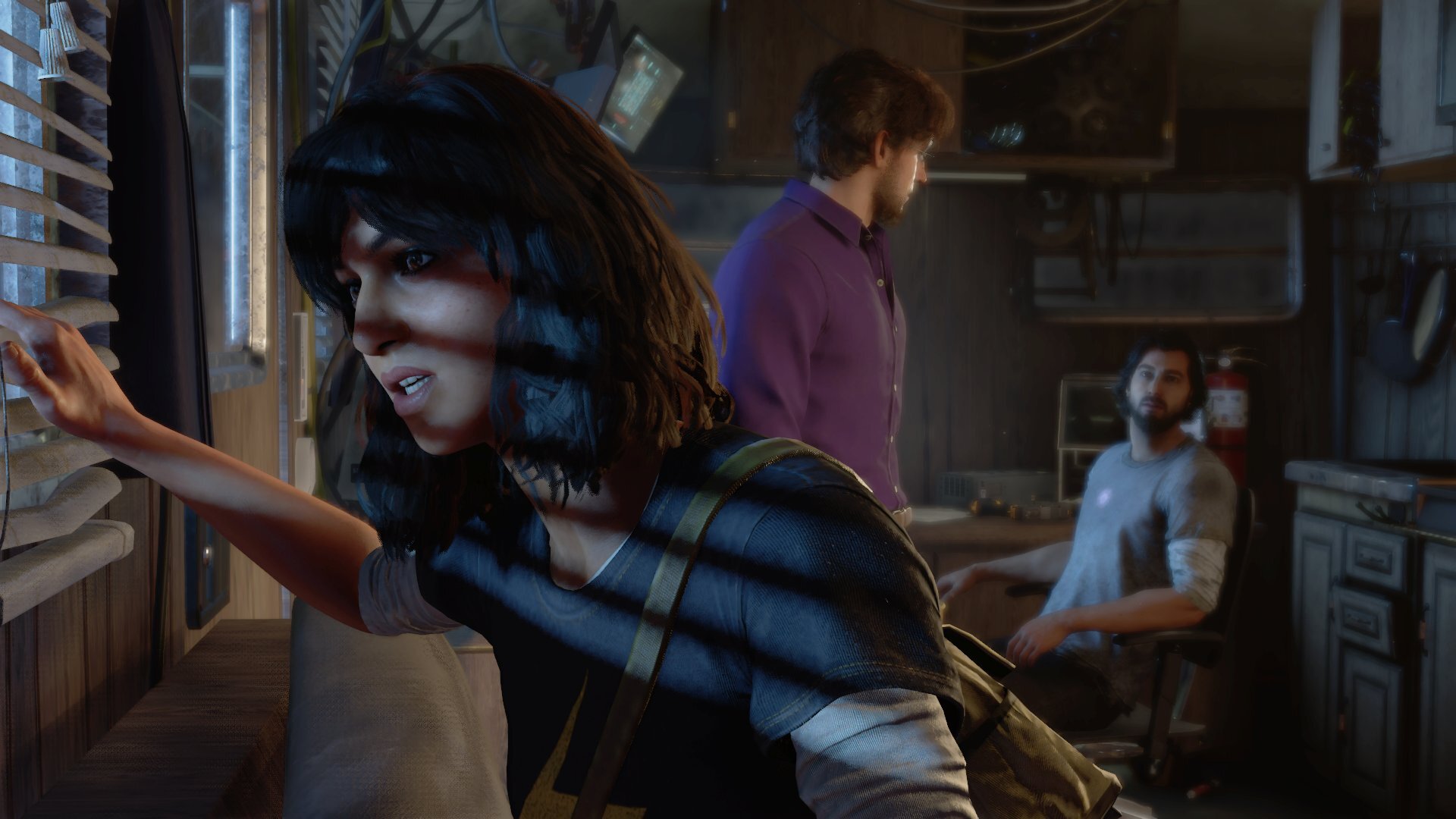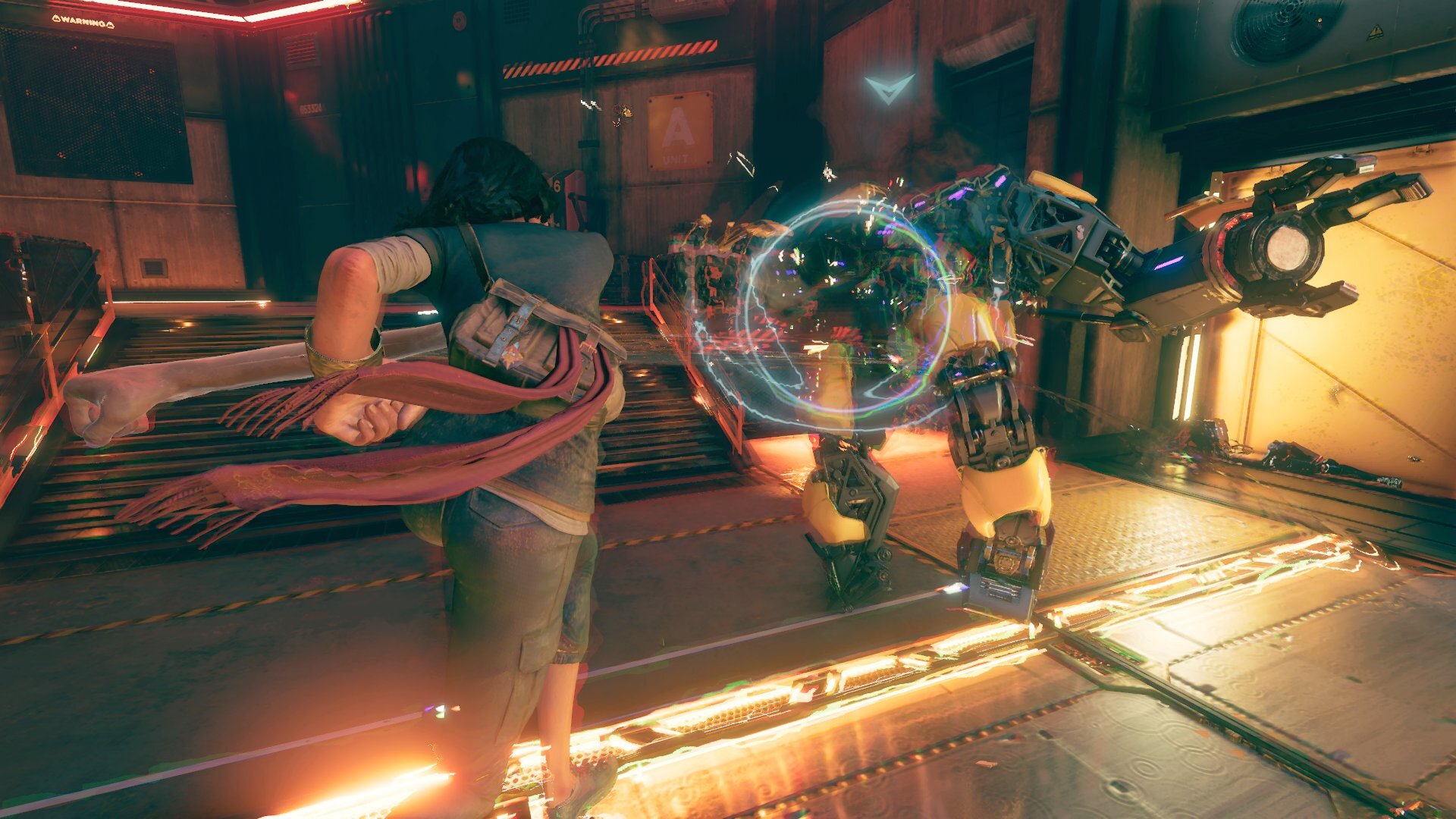Marvel’s Avengers Review – Identity Crisis
/The struggle of a double life was once foundational to the superhero. Reporter, photographer, lawyer, philanthropist by day, costumed hero by night. The tension between these dueling identities made up their drama. But something happened when superheroes made their way into mainstream pop consciousness. Their stories became less about their personal lives, and more about how they relate to the world as icons, celebrities, and global movers and shakers.
Beginning famously with Tony Stark declaring, “I am Iron Man" in his first movie, he dismissed the ruse of a high-powered bodyguard. With that line, he brushed aside a trope many writers had grown tired of dealing with. This generation of superheroes that coincide with the Marvel Cinematic Universe live in a world of social media and global intelligence agencies, where secret identities have not only diminished in prominence, they’ve become impossible to keep.
A similar blurring is at work in Marvel’s Avengers, the long-awaited game from Square Enix, Crystal Dynamics and Eidos Montreal. Once upon a time, games like Call of Duty, Uncharted and even Square’s own Tomb Raider treated thrill-a-minute story modes and multiplayer components as separate experiences. But after live service games caught on, perpetual engagement machines for maximum monetization potential became the new hotness.
Marvel’s Avengers follows in the footsteps of games like Destiny and Tom Clancy’s The Division by merging two different experiences into single hybrid product. And though that presents exciting possibilities and opportunities for a beloved IP, the results are far from perfect. There’s great joy to be had in tearing up the world as Hulk, or clanging various robots in the face with Captain America’s shield. The narrative campaign has its moments, but it never quite hits the highs of 2018’s Spider-Man.
It would be a simple matter to accept the game for what it is, an endless beat-em-up driven by loot and progression, but the repetitive mission design, poor quality of life features, and astonishing number of bugs make this a game that will take several patches and updates before it can really come together.
Some Assembly Required
Many have singled out the narrative campaign as one of the most under-marketed delights of Marvel’s Avengers. Players follow the journey of Kamala Khan, the Pakistani-American teen who would become Ms. Marvel, as she sets out on a journey to clear the Avengers name and in so doing, reassemble them. Played with infectious zeal by Sandra Saad, the prologue introduces us to her as an excitable pre-teen in attendance at A-Day, a celebration for the world-famous super team that's promptly interrupted by a catastrophe.
Five years later, we find the Avengers have disbanded and public sentiment is entirely against them. But when Kamala stumbles upon information that could clear their name, she embarks on a journey that brings the band back together. The idea that the Avengers (and S.H.I.E.L.D.) are not welcomed saviors, but resistance fighters, is an interesting one. It’s an opportunity for the writers to examine the necessity of superheroes in a world where their intentions are considered suspect.
But whether the Avengers are an ultimate force for good or a danger to the world around them is never seriously interrogated. It is only brought up to be dismissed, to reinforce our confidence in the righteousness of their deeds. This might seem like nitpicking, but considering how many AIM footsoldiers are dead from being curb-stomped by the Hulk, or had their larynx shattered by Captain America’s shield, it’s worth examining the moral implications of a world that hates and fears the Avengers.
The true heart and soul of the campaign is the relationship between Kamala and Bruce Banner. Troy Baker turns in a better than usual performance as Banner, who has become despondent in the years since A-Day. It’s the most grounded dynamic in the game, and emphasizes that Kamala’s reverence for Earth’s Mightiest Heroes is more than just hero worship. For all the childlike glee she exhibits, the heart of her journey is always brought back to how much the heroes have inspired her.
Marvel's Avengers puts a fangirl at the center of its story, which to my mind, is the right course to take. Fangirls have consistently predicted the touchstones of culture. They believe in dreamy-eyed teen stars still out to prove themselves, turning out for seemingly superficial pop stars before they become lasting icons. Their best guilty pleasures often become enduring classics. They know who and what’s worth believing in. Kamala stands out as a necessary part of the story alongside the almost rote familiarity of the Avengers themselves.
Embrace What You’ve Become
If you mainline the campaign to Marvel’s Avengers, you’ll get roughly twelve hours of a serviceable narrative experience. It’s a straightforward affair, one that's at its best when it's most indulgent in the blockbuster sense, which is to say that it takes pages from Crystal Dynamics’ own Tomb Raider playbook, most evident when you’re running away from explosions and/or collapsing levels, smashing into AIM facilities, or even during a questionable stealth section.
I was initially underwhelmed by how Marvel’s Avengers shoehorns disparate power sets into a framework of three attack types and three heroic moves. The results are a little awkward, and anyone with a taste for the more refined combat design of Devil May Cry or Bloodborne will be disappointed. But there’s nothing like dashing forward into a brawl as Iron Man because you’re out of repulsor energy only to see the Hulk land a massive elbow drop, or bouncing your shield off of a half-dozen turrets as Cap to protect your pals from their fire.
What I did appreciate is how reliable the companion AI is, when compared to other games. Whereas other multiplayer-intended experiences are unplayable solo, Marvel’s Avengers features companions that can be counted on to revive you when you’re down but not out. They’ll try to prioritize ranged threats when they’re not otherwise occupied, and they join you whenever you turn your focus towards larger threats with unreasonably massive health bars. And in that sense, the game delivers on the promise of the super team fantasy, with or without online friends.
Infinite Saga
The exhilaration to be had is almost enough to offset Marvel’s Avengers questionable design choices and repetitive content. You’ll fight in the same urban, forests, badlands and AIM facilities over and over against waves of robots and AIM grunts. Collecting dailies from your two bases of operation is a chore separated by loading screens. The menus for managing your cosmetics and gear are incredibly cumbersome, and the entire experience is married to an unsatisfying grind.
By the time the campaign is over, it’s unlikely you’ll have acquired enough experience levels for the game to really show off the mechanical possibilities of each character. It’s only after several hours of post-game progression that I’ve begun to customize the impact of Iron Man’s unibeam attack and unlock the full extent of Captain America’s ability to inspire his comrades. The experience isn’t completely button-mashing, but enemies aren’t particularly demanding either.
If I didn’t find the combat in Marvel’s Avengers as entertaining as I do, I would be hard pressed to find a reason to keep playing the post-game missions. A threadbare narrative justification exists for them, but they’re so repetitive and indistinguishable from one another. I’ve grown to resent the lack of mission creativity as well as the shortage of name villains that could complete the superhero fantasy, and the pretext that exists to allow the game to recycle them is one I won’t spoil, but is incredibly laughable.
The loot progression is the driving force behind the games that Marvel’s Avengers emulates, and on this level, it struggles. While gear sports different perks that can change how you fight, those perks don’t feel worth exploring until you approach the game’s power cap of 150. Until then, you’ll be so focused on increasing your power rating that you will dismantle stuff for parts, and the fact that gear doesn’t affect how your character looks feels like a missed opportunity.
Officially, the necessity of a coherent visual design for each hero is why this is so. But the drive for gear in loot shooters and live service games isn’t just about utility, but about being able to cultivate a distinctive look to show off to friends and strangers. This is where cosmetics come in, some of which exist as either rare drops, battle pass unlocks, or are bought for with premium currency. Skins are the most sought after cosmetic, as they’re the only things that completely transform your character visually.
Much hand-wringing has been made about these microtransactions, but the truth is so many of the cosmetics at launch are so unremarkable that they’re not even worth thinking about, which begs the question, “If a game’s premium cosmetics aren’t worth paying for, do its microtransactions still exist?”
Face Front, True Believer
With its myriad design issues and lack of content at launch, it’s difficult to recommend Marvel’s Avengers. While combat thrills – and the warm embrace of a beloved IP – have made experience level gains feel like a breeze, there’s no denying the lack of bespoke content on offer. But this is a game that can only get better, which isn’t publisher apologia, it’s just an undeniable truth for any game that leans so heavily into a future of post-launch updates.
In time, I can only hope that Marvel’s Avengers acquires more enemy types and diversifies its mission objectives, for while I continue to enjoy my time with the game, that’s in spite of these issues. If Crystal Dynamics can clean up the many technical issues that plague the game and redesign some of its more ill-considered UI elements while delivering on all the post-launch content they’ve promised, there’s a real chance this game could become something marvelous.
With the power of a globally recognized brand on its side and a bottomless mug of characters and stories to drink from, the potential for Marvel’s Avengers is infinite. Harnessing it, however, will take more than just a snap of the fingers.
7/10
Highlights
( + ) Narrative campaign is entertaining and centered on a fresh likable protagonist
( - ) Uninspired mission design, recycled levels, and few enemy types make post-game repetitive
( + ) Each character feels different and has surprising depth in spite of the limited combat inputs making combat exhilarating and filled with super team moments
( - ) Loot and gear provide insufficient reason to keep on grinding, and cosmetic options are so bland as to be not worth acquiring
( + ) Reliable companion AI makes solo gameplay surprisingly viable
( - ) Glitches, bugs and many other technical issues haunt the game with irritating inconveniences
What I’ve Played
12 hours of the game’s single-player campaign
36 hours of the game’s post-game missions and side content
34 trophies for a progress of 61%
[This review is based on a PS4 review code provided by Bandai Namco Entertainment.]






















Assassin’s Creed Shadows greatly blends the classic Assassin’s Creed stealth with the RPG elements of recent entries. Its dynamic world, seasonal changes, and improved stealth mechanics make exploration a joy, but Yasuke’s restrictive gameplay, overall story, and a half-baked notoriety system hold it back.